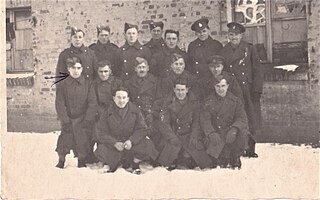
Silesian Voivodeship or Silesia Province is a voivodeship, or province, in southern Poland, centered on the historic region known as Upper Silesia, with Katowice serving as its capital.

Katowice Voivodeship can refer to one of two political entities in Poland:

Nowa Ruda is a town in south-western Poland near the Czech border, lying on the Włodzica river in the central Sudetes mountain range. As of 2019 it had 22,067 inhabitants. The town is located in Kłodzko County, Lower Silesian Voivodeship. It is the seat of the rural district of Gmina Nowa Ruda, but is not part of its territory.
A mining accident is an accident that occurs during the process of mining minerals or metals. Thousands of miners die from mining accidents each year, especially from underground coal mining, although accidents also occur in hard rock mining. Coal mining is considered much more hazardous than hard rock mining due to flat-lying rock strata, generally incompetent rock, the presence of methane gas, and coal dust. Most of the deaths these days occur in developing countries, and rural parts of developed countries where safety measures are not practiced as fully. A mining disaster is an incident where there are five or more fatalities.

Silesian Trams is one of the largest tram systems in the world and the largest and longest tram system in Poland, located entirely within the Silesian Voivodeship. Started as a part of the German Empire in 1894, the system currently has 677 stops across 29 lines and serves the region’s population inhabited by more than two million people. Silesian Trams is at the heart of a region known for its dense historical and current industrialisation.

Stalag VIII-B was a German Army prisoner-of-war camp during World War II, later renumbered Stalag-344, located near the village of Lamsdorf in Silesia. The camp initially occupied barracks built to house British and French prisoners in World War I. At this same location there had been a prisoner camp during the Franco-Prussian War of 1870-71.
Football Junior Championships of Poland Under-19 is a competition which started in the summer of 1936.

The Pacification of Wujek was a strike-breaking action by the Polish police and army at the Wujek Coal Mine in Katowice, Poland, culminating in the massacre of nine striking miners on December 16, 1981.
Karl Godulla, Carolus Godulla, in Polish spelled Karol Godula was a Silesian self-made industrialist, and one of the best-known pioneers in the industrial development of Prussian Silesia.

The 1988 Polish strikes were a massive wave of workers' strikes which broke out from 21 April 1988 in the Polish People's Republic. The strikes, as well as street demonstrations, continued throughout spring and summer, ending in early September 1988. These actions shook the Communist regime of the country to such an extent that it was forced to begin talking about recognising Solidarity. As a result, later that year, the regime decided to negotiate with the opposition, which opened way for the 1989 Round Table Agreement. The second, much bigger wave of strikes surprised both the government, and top leaders of Solidarity, who were not expecting actions of such intensity. These strikes were mostly organized by local activists, who had no idea that their leaders from Warsaw had already started secret negotiations with the Communists.
The 2009 Wujek-Śląsk mine blast occurred at the Wujek bituminous coal mine in Ruda Śląska, Poland on 18 September 2009. At least 20 miners were killed and at least 37 more were hospitalised. It is the country's deadliest mining accident since the deaths of 23 miners from methane at the Silesia's Halemba mine in November 2006.

The Zofiówka coal mine is a large mine in the south of Poland in Jastrzębie-Zdrój, Silesian Voivodeship, 307 km south-west of the capital, Warsaw. Zofiówka represents one of the largest coal reserve in Poland having estimated reserves of 87 million tonnes of coal. The annual coal production is around 3.7 million tonnes.

The Halemba coal mine is a large mine in the south of Poland in Halemba district of Ruda Śląska, Silesian Voivodeship, 273 km south-west of the capital, Warsaw. Halemba represents one of the largest coal reserves in Poland, having estimated reserves of 120 million tonnes of coal. The annual coal production is around 3.36 million tonnes.

2006 Halemba Coal Mine disaster refers to the accident of 21 November 2006 in the Halemba Coal Mine, Ruda Śląska, Poland. An explosion of methane and coal dust resulted in 23 fatalities. It was one of the largest mining disasters in Poland. The government declared three days of national mourning.

Halemba is a district in the south-west of Ruda Śląska, Silesian Voivodeship, southern Poland. It lies on the river Kłodnica, right tritubary of Odra. It has an area of 19.6 km2 and in 2006 it was inhabited by 26,080 people.
The Upper Silesia 1980 strikes were widespread strikes, which took place mostly in the Upper Silesian mining cities Jastrzębie-Zdrój, Wodzisław Śląski and Ruda Śląska and its surroundings, during late August and early September 1980. They forced the Government of People's Republic of Poland to sign the last of three agreements establishing the Solidarity trade union. Earlier, agreements had been signed in Gdańsk and Szczecin. The Jastrzębie Agreement, signed on September 3, 1980, ended Saturday and Sunday work for miners, a concession that Government leaders later said cut deeply into Poland's export earnings.










